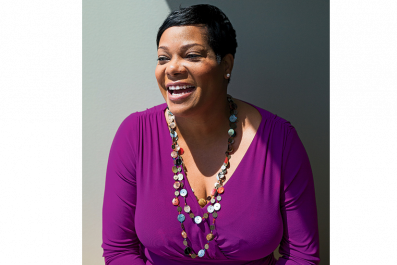Dear Supreme Court:
Please blow up television so we can start over.
In this era of ubiquitous high-speed networks, we need over-the-air, linear, appointment-driven broadcast TV the way we need zeppelins or vaudeville. If we were to create TV from scratch today, it would look nothing like the TV we've got.
The Supreme Court is in the process of ruling on a case involving Aereo, which is exploiting a loophole to siphon network TV broadcasts onto the Internet so its users can watch 60 Minutes or live NBA games on a phone or computer screen. The broadcasters say that if Aereo wins, their industry is doomed.
And I say, Yeah! That would mean we could turn all of that magnificent broadcast TV-radio spectrum into warp-speed wireless Internet service. With luck, traditional cable lineups will gurgle into oblivion, too—a big loss because you know how consumers love paying $100 a month for a lineup of Swamp People and Ancient Aliens. If we wipe out that whole cable feed, cable wires can become big fat Internet pipes into homes.
Then all video content would ride on the Net, and flow into Internet-enabled TVs, laptops, mobile devices, Google Glass and whatever. The likes of ABC and NBC and local channels wouldn't go away—their programming would come to us online instead. The only thing the old broadcasters wouldn't do is broadcast—they wouldn't send out linear programming over airwaves.
Well, the broadcasters also would no longer get billions of dollars in fees from cable operators for their programming streams, and cable operators in turn wouldn't be able to bleed consumers for billions of dollars in charges for broadcast programming. That would upset a lot of business models, while making consumers very, very happy.
If the Supremes rule for Aereo, they'll speed up progress. Everything about TV is already moving in the direction of Internetification, and Aereo is just one more point on that trend line.
Look at recent news. In late April, Yahoo announced that it's going to develop two TV-length sitcoms it will show exclusively on its websites and mobile apps. Will the quality of shows for Yahoo's 800 million users reach the level of, say, ABC's The Goldbergs? Yahoo CEO Marissa Mayer promises it will, even if that's not a high bar. "Users expect online content to be as good as, if not better than, TV," she said.
In the same week, Microsoft unveiled its Xbox Entertainment Studios, and Glam Media—an aggregator of lifestyle content with a global audience of 253 million—changed its name to Mode Media and unveiled a new video channel. "We have an entertainment studio in L.A., and our programming will be 5 percent to 10 percent original content that we'll produce," CEO Samir Arora told Newsweek.
These moves follow a parade of stuff happening in Internet-based video, including breakout series from Netflix like House of Cards and major forays into programming by Amazon and YouTube. If the broadcast networks think they're special because they've been creating programming for a long time, I'd encourage them to talk to newspaper editors who thought they were special because they'd been covering news for a long time.
Some might argue that broadcast is necessary for live events, like sports. Hogwash. The NHL and Major League Baseball sell live games on the Net for a fee. It would be entirely possible for them to completely cut out the broadcast and cable middlemen. The Oscars, live news—any of it could ride on the Internet.
Advertisers are sliding toward Internet video content. Though spending on TV advertising is about 25 times larger than Internet video advertising, the latter is growing by double digits and gaining fast. High-quality, TV-style content offers multiple ways to make money: ad-supported (YouTube), subscription (Netflix), and pay-per-view (Louis C.K.).
The Federal Communications Commission sees the logic. Next year, it will buy back spectrum from some broadcasters and resell it as wireless Internet, furthering the migration of content from the old way to the new way. The European Union is launching a study into future use of broadcast-TV spectrum.
What about the people who don't get cable and rely on free TV over the air? Depending on whom you ask, that's about 8 percent of households in the U.S. If all content moves to the Net, we'd have to find a way to make sure every household can be online—not a bad goal regardless.
The Aereo case shows that the traditional TV industry is increasingly held together by legal maneuvers and political clout. Aereo could lose in court, but only because the laws are written to protect broadcasters. As consumer groups argue, Aereo—backed by TV turncoat Barry Diller—is giving us what we really want: our favorite video content any time on any screen for a reasonable price. Broadcasters and cable companies could've done that on their own, but their legacy business models make such a move impossible. As often is true in the digital age, a disruptive newcomer can force a change that's waiting to happen.
Aereo isn't even the first to try this. In 1999, a six-employee company in Toronto called ICraveTV put up an antenna and sucked in broadcast signals from 17 networks in Canada and Buffalo, N.Y., and streamed the programs over the Internet to its website. The Internet was still pretty lo-fi then, so users watched grainy, jerky video in windows the size of Post-its. Still, the broadcast industry panicked, sued and shut down ICraveTV in 2000.
"There's something in the fact that they're all ganging up on us that makes us wonder, Why all the bluster?" ICraveTV's founder, Bill Craig, told me in an interview back then. "Usually, it's a sign of insecurity."
Fourteen years later, it turns out the TV industry was right to feel insecure. We once loved TV. Now it's like a 42-year-old Willie Mays on the 1973 Mets: too old, out of place and in the way.




















